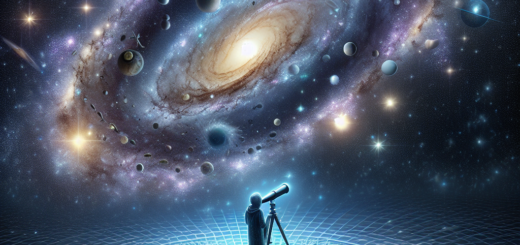Unraveling the Secrets of Space-Time: Recent Breakthroughs in Astrophysics
Astrophysics is a field that has captured the imagination of humans for centuries. From ancient civilizations studying the movement of stars and planets to modern-day scientists exploring the depths of space, the mysteries of the universe have always been a source of fascination and wonder. In recent years, breakthroughs in astrophysics have shed new light on the nature of space-time, the fabric of the cosmos that governs the movement of objects in the universe.
One of the most significant recent breakthroughs in astrophysics is the detection of gravitational waves. Predicted by Albert Einstein in his theory of general relativity, gravitational waves are ripples in the fabric of space-time caused by the acceleration of massive objects. In 2015, the Laser Interferometer Gravitational-Wave Observatory (LIGO) made history by detecting gravitational waves for the first time, confirming Einstein’s theory and opening up a new era of astrophysics.
Gravitational waves have provided scientists with a new way to observe the universe, allowing them to study phenomena such as black holes, neutron stars, and supernovae in ways that were previously impossible. By detecting the gravitational waves emitted by these cataclysmic events, scientists can learn more about the nature of space-time and the behavior of matter under extreme conditions.
Another recent breakthrough in astrophysics is the discovery of exoplanets, planets that orbit stars outside of our solar system. In the past few decades, astronomers have identified thousands of exoplanets using techniques such as the transit method and the radial velocity method. These discoveries have revolutionized our understanding of the universe and raised new questions about the potential for life beyond Earth.
By studying the properties of exoplanets, scientists can learn more about the formation and evolution of planetary systems, as well as the conditions necessary for life to exist. In recent years, researchers have identified several potentially habitable exoplanets, raising the tantalizing possibility that we may not be alone in the universe.
In addition to these breakthroughs, astrophysicists have made significant progress in understanding the nature of dark matter and dark energy, two mysterious substances that make up the majority of the mass-energy content of the universe. While dark matter has long been known to play a crucial role in the formation of galaxies and galaxy clusters, its exact nature remains a mystery. Recent observations of the cosmic microwave background radiation and the large-scale structure of the universe have provided new insights into the properties of dark matter, shedding light on its role in shaping the cosmos.
Similarly, dark energy, a mysterious force that is causing the expansion of the universe to accelerate, has puzzled scientists for decades. Recent observations of distant supernovae and the cosmic microwave background have provided new constraints on the properties of dark energy, leading to a better understanding of its effects on the evolution of the universe.
Overall, recent breakthroughs in astrophysics have brought us closer to unraveling the secrets of space-time and the nature of the cosmos. By studying phenomena such as gravitational waves, exoplanets, dark matter, and dark energy, scientists are gaining a deeper understanding of the fundamental forces that govern the universe. As technology continues to advance and new discoveries are made, the mysteries of the universe are sure to continue to captivate and inspire us for generations to come.













